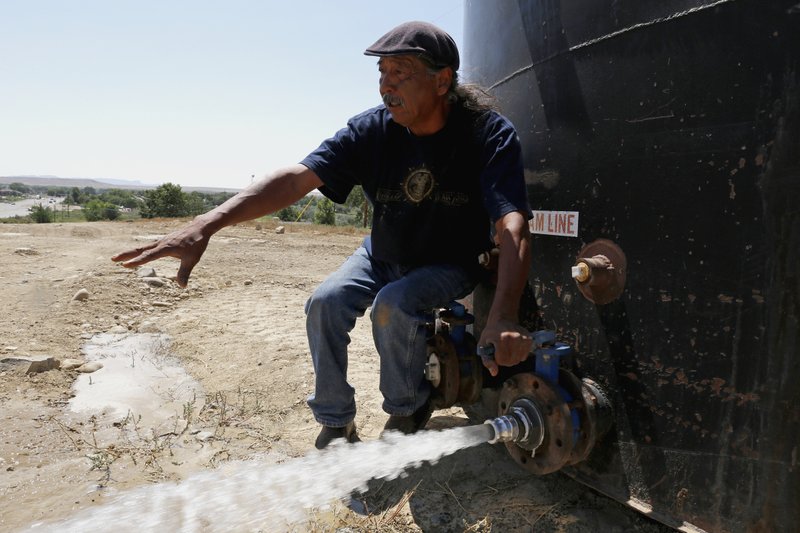FLAGSTAFF, Ariz. -- The quality of San Juan River water on the Navajo Nation has returned to what it was before a spill at a Colorado gold mine sent toxic sludge into the waterway, federal officials said Thursday.
The testing by the U.S. Environmental Protection Agency along with that of the Navajo EPA has prompted tribal President Russell Begaye to consider lifting an advisory against using the river to water crops.
Begaye has said he would not advise hundreds of farmers on the Navajo Nation to do so until the tribe's own testing declared the river safe.
Those results will be provided at a meeting later in the day with farmers in Shiprock, N.M., tribal spokesman Mihio Manus said.
The federal EPA said testing of surface water collected over the course of a week in Hogback, N.M., showed water quality at the same levels as those measured before the mine waste reached the reservation. The agency has taken full responsibility for the Aug. 5 spill at the Gold King Mine.
Manus said Begaye will talk with farmers about flushing irrigation canals and possibly opening them up this weekend. The EPA said it will provide technical assistance.
Hundreds of Navajos farm along the San Juan River, growing squash, melons, corn and other crops to sustain their families and to sell at roadside stands and a tribal fair in October in Shiprock.
After the spill, federal agencies, including the EPA and the U.S. Bureau of Indian Affairs, arranged for water to be hauled to tribal communities and hay to be delivered for livestock.
EPA Administrator Gina McCarthy and Begaye spoke Wednesday about water quality in the river and agreed to have the EPA cease water deliveries today for agricultural use on the reservation, the EPA and Manus said.
The agency said it would work with the Navajo Nation on a monitoring plan for the river.
Shiprock farm board member Joe Ben Jr. said he wouldn't support a return to using the canals to water crops because not enough is known about the impact to the soil.
Messages left with farm board members in Hogback and Cudeii, two other tribal communities where farmers rely on river water, weren't immediately returned.
"The testing that was done was surface testing, no subsurface testing, also sediment testing," Ben said. "And never any information about the long-term and short-term effects of these toxins in our water."
New Mexico environment officials said Thursday that they were planning another water-testing fair for residents next week, and the results from previous tests have been mailed to about 570 private well owners.
Those tests didn't focus on heavy metals, but officials said the results of more extensive testing of more than 100 wells in the Animas valley will be released by the EPA in the coming weeks.
A Section on 08/21/2015

